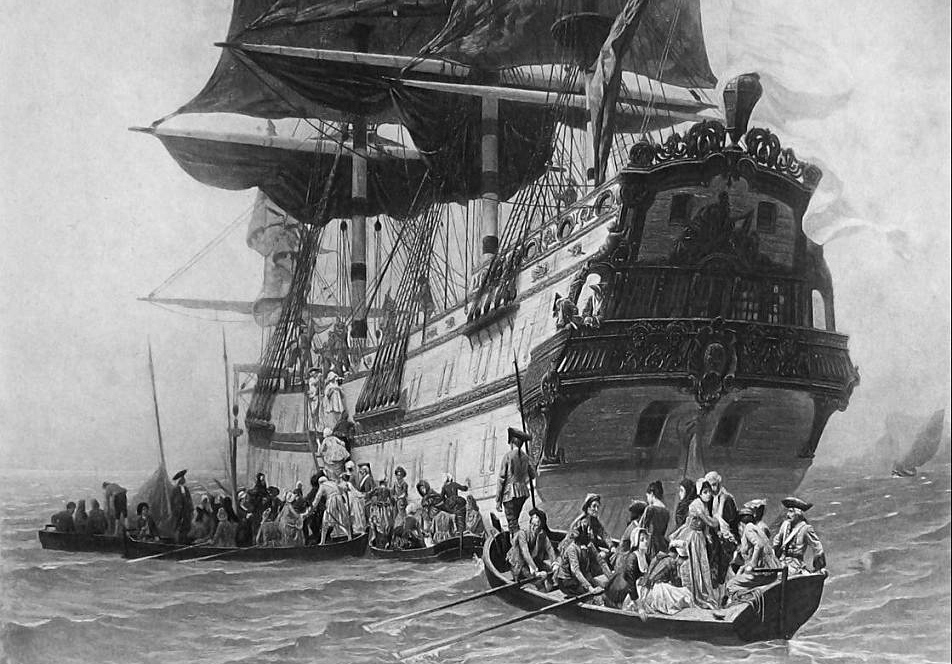A depiction of prospective brides departing France – from a 1883 painting entitled “L’embarquement de Manon Lescaut” by Charles Edouard Delort.
From La Salpetriere to Biloxi
In January, 1721, the French cargo ship BALEINE delivered a group of women and girls, ages 12 to 30, into the care of Governor Bienville in Louisiana. They had come from the Hospital General at La Salpetrière in Paris. Most of them soon found husbands among the citizens of Biloxi, then the capitol of the French colony, or among the ship’s crew. Some girls, orphaned at birth, had been raised and educated at La Salpetriere. The list of girls had been approved by Cardinal Louis-Antoine de Noailles, Archbishop of Paris. The group became known as the Baleine Brides.
The list of their names was lost for 266 years. It was discovered in the French Archives and published by Bruce Ardoin in 1987. At least, twenty-five of the girls founded lasting families in Mississippi, Louisiana, Alabama, or Illinois. The Baleine’s genetic contribution to America approaches that of the the MAYFLOWER, which had arrived 100 years earlier. All of the Baleine Brides had volunteered. None of them had been deported.
Thus, Biloxi became the equivalent of “Plymouth Rock” for the French colony of Louisiana. On September 6th, 1620, twenty-nine Pilgrim women had set sail from England on the Mayflower, in order to escape religious persecution. Fifteen of those women died within six months of their arrival in America.
Governor Bienville apparently received at least 72 young women of child-bearing age, desperate to escape social and moral persecution in France. These French women eventually formed the genetic foundation on which Gulf Coast societies have been built.

